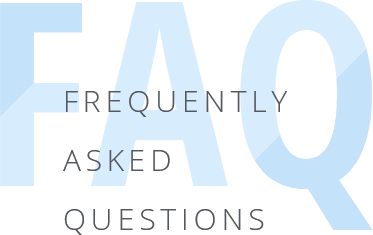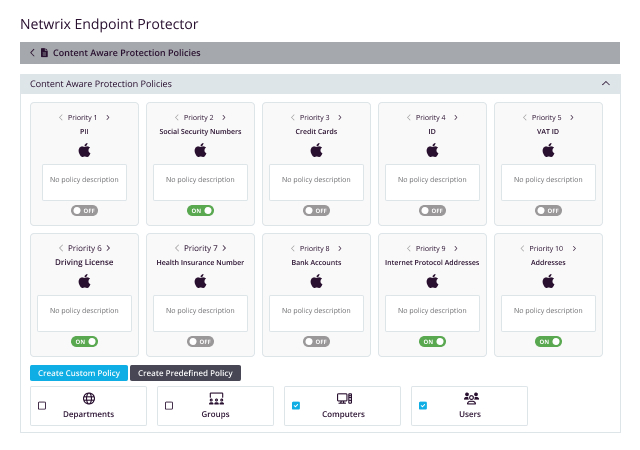NETWRIX ENDPOINT PROTECTOR CONTENT AWARE PROTECTION
STOP DATA LOSS AT THE ENDPOINT WITH CONTEnt AWARE dlp
Continuous data protection across Windows, macOS, and Linux
Content Aware Protection enables security professionals to monitor, control, and block the transfer of sensitive data, including PII, PHI, PCI and more, from employee endpoints. A single interface covers all major operating systems to enforce Data Loss Prevention policies across hardware and software-based exit points, even when endpoints are offline.
Protect company IP, PII, financial data, and other regulated data types in real-time
Reliability and Privacy
Resistant to connectivity drops and geographical restrictions, to give you the highest level of performance and privacy possible.
Business Continuity
Minimize risks of data leaks and data losses across Windows, macOS, and Linux endpoints, with same-day support for the latest OS releases.
Granular Controls
Enforce policies across user groups and defined exit points, from removable storage media, to email, enterprise messaging apps, uploads to cloud services, and more.
Multiple deployment options
Virtual appliance
Available in VMX, PVA, OVF, OVA, XVA and VHD formats, being compatible with the most popular virtualization tools.
Cloud services
Available for deployment in the following cloud services: Amazon Web Services (AWS), Microsoft Azure or Google Cloud Platform (GCP).
SaaS
Reduce deployment complexity and cost. Focus more resources on identifying and mitigating risks to your sensitive data and less on maintaining the infrastructure.

What is Netwrix Endpoint Protector Content Aware DLP?
Content Aware DLP is a data loss prevention measure that involves awareness of the context or content that is being protected. This module enables the dynamic application of policy based on the content and context at the time of an operation. These tools are used to address the risk of inadvertent or accidental leaks, or exposure of sensitive enterprise information outside authorized channels, using data monitoring, filtering, blocking and remediation features.
Why do organizations need Netwrix Endpoint Protector Content Aware DLP?
In today’s ultra-connected fast-paced work environment, collaborative tools, messaging applications and popular file transfer or sharing platforms like Google Drive or Dropbox or even social media applications are regularly used to share information. It is easy to imagine how things can go wrong from here: data accidentally shared publicly, sent to the wrong recipient, saved on unauthorised computers, all with a simple click. In other words: data loss just waiting to happen. This is where Netwrix Endpoint Protector Content Aware Protection comes into play, beside other DLP tools, such as Device Control or eDiscovery.
How does the Netwrix Endpoint Protector Content-Aware Protection module work?
The Content Aware Protection module allows full control over the files transferred over the internet or the network through various exit points and online applications. Administrators can simply define a policy by choosing which operating system it will apply to, which exit points should be monitored (web browsers, instant messaging applications, cloud services, etc.) and what actions should be taken when the policy is violated. Namely, whether it should be reported, blocked or both. Policies can be applied globally or restricted to different departments, groups, users or computers. Once Content Aware Protection policies are in place, they can easily be switched on and off by administrators at any time from the administrative dashboard.
Does Netwrix Endpoint Protector Content Aware DLP help with data protection regulations?
DLP solutions such as Netwrix Endpoint Protector have built-in predefined Content Aware Protection policies that aim to help organizations on their road to compliance. Special profiles for GDPR, PCI DSS and HIPAA compliance can, once selected, support companies’ efforts to protect sensitive data that falls under the jurisdiction of these regulations. At the same time, due to the high number of predefined policies for personal information, organizations can easily build profiles for compliance with their local data protection regulations.



